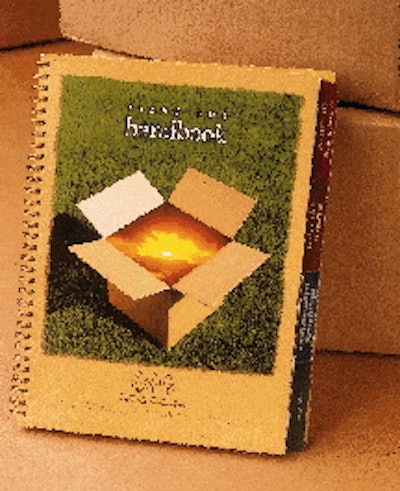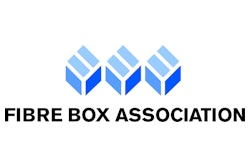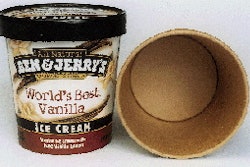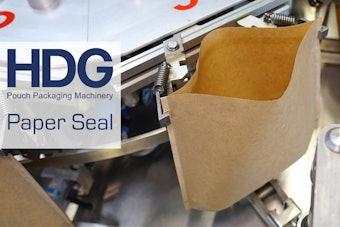
Those facts come from an attractive three-page "timeline" foldout at the beginning of the Fibre Box Handbook. The 21st edition of the handbook comes from the Fibre Box Assn. (Rolling Meadows, IL). As the book's introduction tells readers, this 1999 edition "has been completely rewritten, redesigned and reorganized." Anyone who's seen some earlier editions of the handbook would strongly agree.
The 1999 edition, which is priced at $15 for members ($30 for non-members), makes liberal use of color type and photography, graphs and open space to make the book not only informative, but attractive as well.
Besides its improved graphic appeal, the new version also differs from some of its predecessors in that it's spiral-bound rather than perfect-bound. That means the book can be opened to any page, and it will lie flat on a desk. The handbook is separated into four primary sections that are easily identifiable by color tab pages on heavier paper stock.
The corrugated process overview section walks readers through the cycle, from raw materials to the paper mill, through the box plant and box recycling stages. The design section delves into box styles and structures (where familiar-looking graphics illustrate the likes of bellows-, bliss- and telescoping-box styles).
Box engineering
This section also credits the complexity of packaging engineering that goes into developing a box that will best serve its shipping and storage functions.
The section points out, "The most important items an engineer must keep in mind are legal considerations. These might involve hazardous waste, hazardous materials, direct food contact or other issues."
A list of considerations is provided for engineers in designing an efficient package. These include knowing the product, its characteristics and its potential vulnerability to crush, abrasion and puncture.
Under the subhead, "Stacking and Compression," formulas are provided to help engineers and designers determine compression strengths of regular slotted containers.
The second section discusses graphic designing, printing and finishing steps. This section helps guide designers in determining what substrate to print on, either the board itself or linerboard before it's glued to the corrugated medium.
The final two tabbed sections of the publication are rules, regulations and recommendations, followed by a section called resources. Carrier rules, federal and military specifications, Food & Drug Administration regulations and Environmental Protection Agency rules are discussed.
The resources section contains concisely written explanations of box tests, many of which are accompanied by close-up photos showing various tests. The combination of succinct description, subheads and photography makes what could be a dry section both helpful and appealing.
An alphabetical glossary of terms comes next, followed by a list of recommended reading and sources of additional information.
While previous versions of the handbook were helpful, limited use of color and long, descriptive copy put them in the same category as dry journals or textbooks. The widespread use of graphic elements, whether photographs or charts, help make the 21st edition of the Fibre Box Handbook a reference work that really should be used. (JB)






















